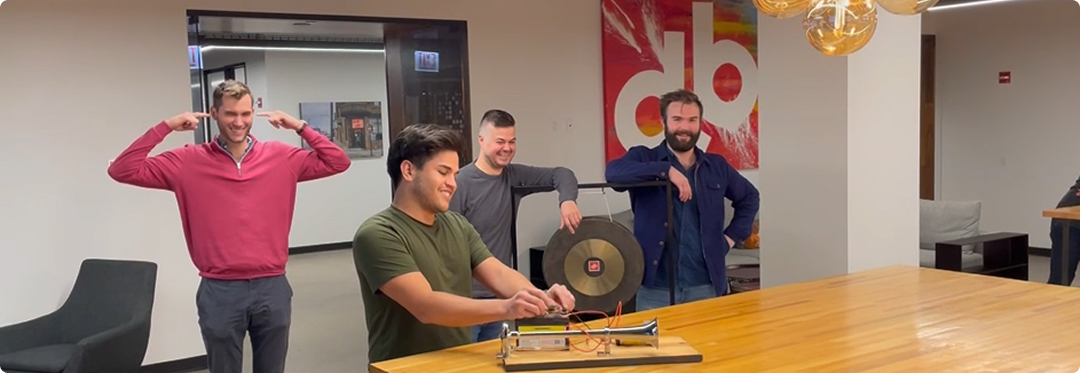
Truckstop Go is a mobile and desktop freight management app that gives truck drivers the tools to find loads (jobs), post their availability, negotiate rates, and more.
Results.
Massively improved customer engagement & satisfaction: 4.8 (App Store) / 4.7 (Google Play) over 1,000+ ratings. Functional unity between desktop and mobile. Successfully teamed with Truckstop's internal design team to build out their mobile app, bring improvements into their web app, and build a useable and scalable design system. As the lead designer for the project, I brought a number of voices together for a unified outlook on managing a modern-day trucking business.
Team.
On Devbridge (consultant) team as senior product designer, along with two product managers, a business analystOn Devbridge (consultant) team as senior product designer, along with two product managers, a business analyst, and in-house engineers. Worked directly with Truckstop head of design, design team, and engineers, as well as Truckstop's main product owner., and in-house engineers. Worked directly with Truckstop head of design, design team, and engineers, as well as Truckstop's main product owner.
"I want to take a moment to voice my praise for the Devbridge team and the excellent work produced...it is one thing to have internal stakeholders excited about a product and quite another to have customers sing that praise..." - Truckstop product owner
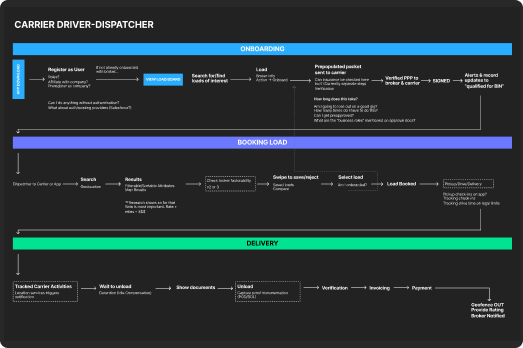
Knowledge Gathering.
Our main client stakeholder flew in from Colorado and we spent a couple of days in the office (and a couple of great Chicago restaurants) with our product managers. I led service map exercises of current and desired processes. This helped us to get a great sense of the complexities of the driver/broker relationship, especially with regard to commercial transportation laws and regulations.
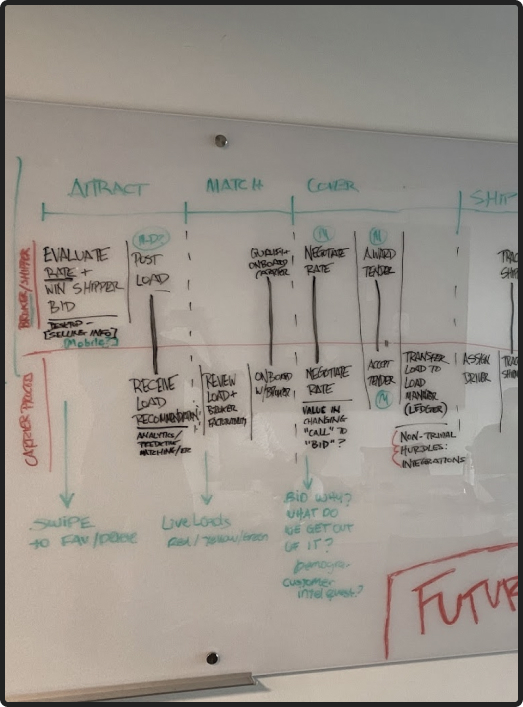
We came out with two product principles to guide our work: 1 - Work from a mindset of progressive disclosure. Give our users what they need exactly when they need it - not before, not after. 2 - Help the driver quickly answer two questions about any given opportunity: CAN I book this load? Do I WANT to book this load?
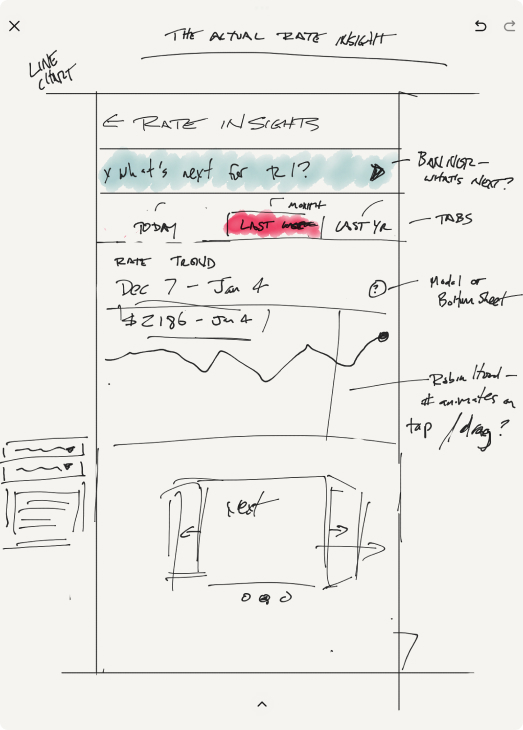
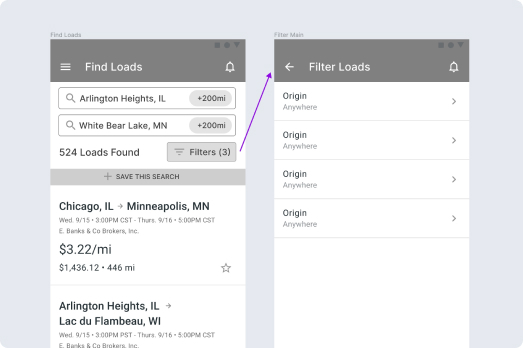
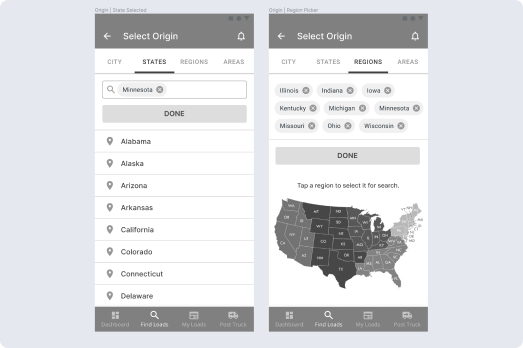
Building & prioritizing features.
The product managers and I led discussions with client product owner to understand functionality: we banned interface-based solutioning until we felt we understood the problem. I had a lot of chats with Truckstop product designers to understand historical contexts and design decisions, to make sure we weren't overrunning historical choices just because we could.
I took a major role in writing stories in JIRA and defining acceptance criteria. 90% of the design work was done with lo-fi sketches and wireframes, which with a good design system should outpace high-fi design every time.
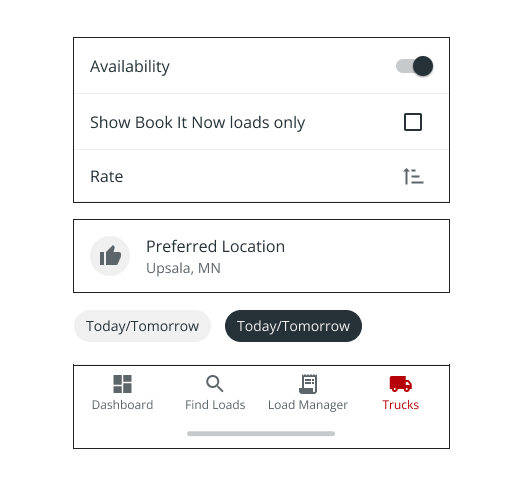
Pattern library.
The goal of the pattern library was NOT to precisely match the current web experience or to address every future or possible use case at the outset: instead, it needed to be relatively and reasonable flexible while reducing small-scale feedback friction. We used Material Design to get us up and moving quickly.
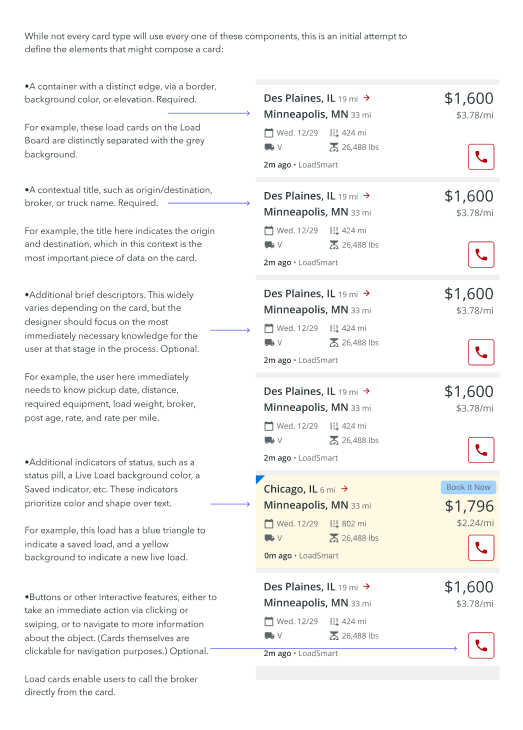

Stakeholder management.
Because we were effectively combining two full product teams, with product managers, designers, and engineers on both sides, we needed to ensure that the many voices were heard while still pushing for quick, clear, and actionable decisions that would drive the product forward (no pun intended). To that end, I took the lead in building us a process.

"The 4.8 Star Rating we are seeing in the Apple App Store...from more than 1,000 ratings is testament to the quality efforts put forth and the teamwork we are seeing across the board. High-fives all around and look forward to seeing this app continue to grow and delight our customers." - Truckstop product owner

A successful MVP with a clear roadmap.
By the time I offboarded from the project, we had an MVP in the wild that had already hit 4.8 (App Store) and 4.7 (Google Play) over 1,000+ ratings. We'd also collaborated with Truckstop's design team to provide usable delivery techniques for them to take home. We led the way in effectively creating and governing a pattern library, working iteratively, abstracting solutions, and (especially) understanding that 'perfect' is the enemy of 'shipped'. Being careful and craft-driven is important, but it needs to be balanced with opinionated design that's based on research outcomes.
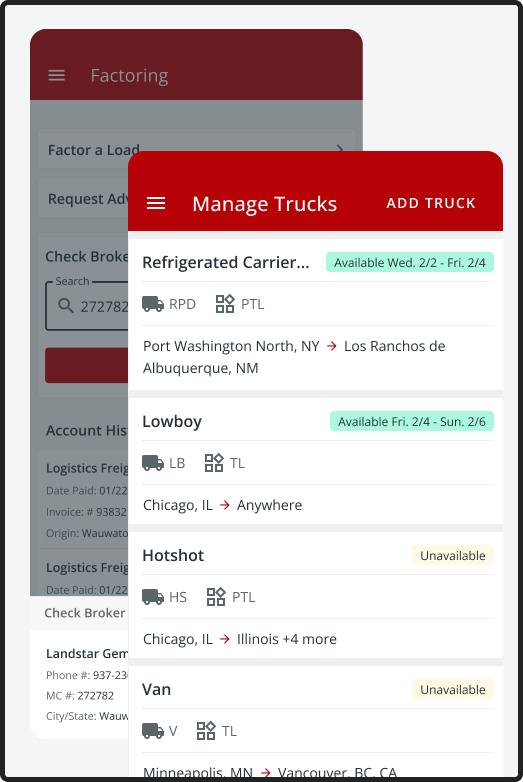
(We also got our very own truck horn to go with our Devbridge gong, which we flipped on at every milestone! Our co-workers loved us and were not annoyed at all.)
